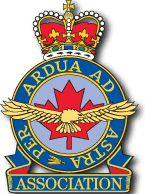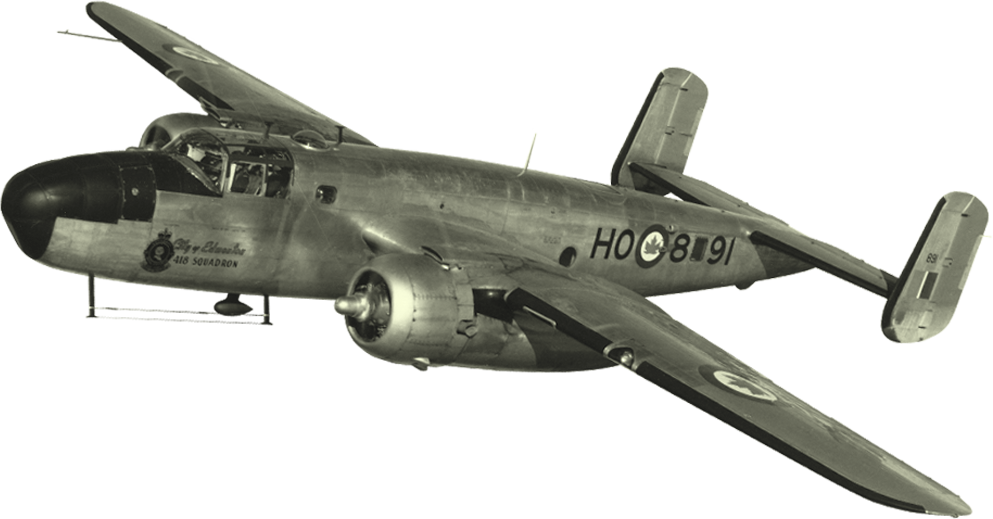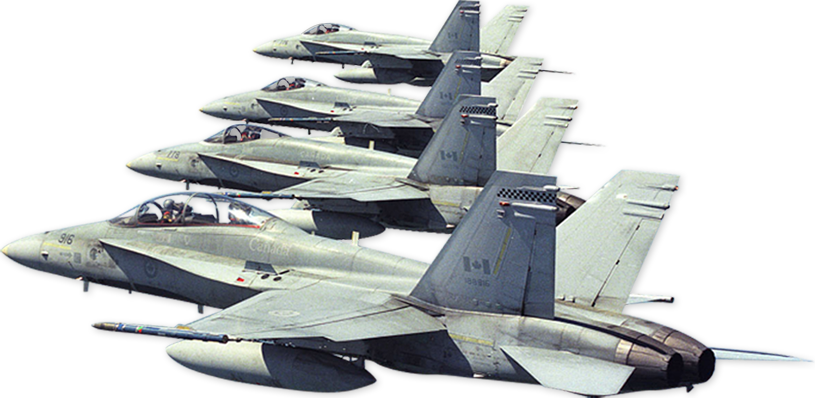CHRISTISON,
William Ritchie
Flight Lieutenant,
No.404 Squadron,
J15143
Distinguished Flying Cross - Bar to Distinguished Flying Cross
RCAF Personnel Awards 1939-1949
Description (click to view)
CHRISTISON, F/L William Ritchie (J15143) - Distinguished Flying Cross - No.404 Squadron - Award effective 17 October 1944 as per London Gazette of that date and AFRO 2534/44 dated 24 November 1944. Born 19 September 1919 in Montreal. Home in Lennoxville, Quebec where he was educated. Wool packer for Canadian Cooperative Wool Growers. Enlisted Sherbrooke, 21 July 1940. To No.1 Manning Depot, Toronto, 23 July 1940. To No.2 ITS, Regina, 30 August 1940. Promoted LAC, 22 October 1940 and posted that date to No.2 EFTS, Fort William. While there he flew 28 hours 40 minutes (dual) and 23 hours 55 minutes (solo) in Tiger Moths and five hours in Link. Seemed prone to dizziness and considered a nervous pupil. “He tries hard and is willing. Should develop into a valuable pilot.” Graduated 23rd in a class of 35. To No.7 SFTS, Macleod, 19 December 1941. Flew 25 hours 45 minutes (day dual), 36 hours five minutes (day solo), three hours (night dual) and three hours (night solo), all on Ansons. Considered above average and graduated 19th in a class of 40, 6 March 1941 and promoted Sergeant. In January 1942 he was commissioned, effective 6 March 1941. Joined No.404 Squadron, 10 May 1941. Promoted Flying Officer, 1 October 1942. On 21 October 1942, damaged Beaufighter V8191 during dusk landing (swung on landing from non-operational exercise). Assessed on 29 January 1943 as “A very good and dependable operational pilot. Level headed with a very steady character and quiet but attractive personality. A good officer.” (G/C J.W. Colquhoun). On 7 June 1943 he was assessed as “A very reliable, above-average officer.” At that time he had flown 534 hours 30 minutes (87 hours 40 minutes in previous six months). To No.2 (Coastal) OTU, 27 June 1943. Promoted Flight Lieutenant, 14 January 1944. As of 21 January 1944 he was assessed as “An average instructor who can always be relied upon”. At that time he was reported as having flown 866 hours 40 minutes as a pilot (110 hours 30 minutes in previous six months). Departed for leave in Canada, 2 February 1944. Disembarked in Canada, 13 February 1944. Departed Canada, 29 March 1941. Embarked from Canada, 31 March 1944. Arrived in Britain, 7 April 1944 and taken on strength of No.3 PRC, Bournemouth. To No.404 Squadron, 22 April 1944. In Beaufighter NE198, 6/7 May 1944, he was hit by flak prior to firing rockets. When he did fire rockets, one exploded on rack, causing severe damage to starboard wing. Promoted Squadron Leader, 27 August 1944. Killed in action with No.404 Squadron, 24 March 1945 (Beaufighter NV428); name on Runnymede Memorial. RCAF photo PL-2704 shows Sergeants R.M. Booth (Drummondville, Quebec), W.R. Christison (Lennoxville, Quebec), J.B.M. Vilandre (Montreal), R.A. Ellis (Montreal) and W.F. Kenwood (Montreal). Photo PL-3109 shows graduating pilots at No.7 SFTS - R61786 G.E. Kerley, R62709 W.R. Christison, R69887 T. Hare, R51983 T.B. Lee. RCAF photo PL-41455 (ex UK-17712 dated 21 December 1944) shows four members of No.404 Squadron who are on their second tours and are veterans of Blenheim operations with the unit - S/L Bob Schoales, DFC (Fort William, a flight commander), W/C Edward W. Pierce (Wolverhampton, England, the Commanding Officer), S/L W.R. Christison, DFC (Lennoxville, the other flight commander) and F/O L. Bolli (Jasper, Alberta) - this might be a misspelling of L.S. Boileau. Caption says, “After finishing their first tours they all went to the same OTU for six months instructional duties and then went to Canada on leave, with the exception of the Wing Commander who acted as a Chief Instructor at an OTU for another six months.” At the time of his death he was reported as having flown 1,042 hours 15 minutes (93 hours in previous six months) and was described as “A well-above average pilot; an able leader and a fine type of officer” (W/C E.W. Pierce) and “An outstanding operational pilot who has displayed very high courage and leadership”(G/C R. Terence Corry) // This officer has completed a large number of sorties and has at all times displayed exceptional coolness and determination. On a recent sortie he was flight commander in an attack upon enemy shipping in Le Verdon harbour. During the action his aircraft was hit by anti-aircraft fire rendering one engine useless. However, Flight Lieutenant Christison completed the attack and made a successful return flight, landing at an advanced base in France. This officer has led his squadron with great skill and has set a fine example to all. // NOTE: Public Record Office Air 2/9160 has recommendation drafted by the Officer Commanding, Station Davidstow Moor, 27 August 1944 when he had flown 93 sorties (290 operational hours): // Flight Lieutenant Christison was the leader of eight aircraft of No.404 Squadron in a highly successful attack upon two enemy destroyers in Le Verdon harbour in the Gironde estuary on 24th August 1944. // Flight Lieutenant Christison led his squadron with great skill and gave the Wing Leader every confidence that the attack would be successful. // His aircraft was hit by flak during the attack and the port engine was rendered useless. Despite this, Flight Lieutenant Christison carried on and made a successful landing at an advanced base in France. // His coolness and determination have set the highest example to his squadron. // Recent information indi cates that both enemy destroyers were sunk. // I therefore strongly recommend that an immediate award of the Distinguished Flying Cross be made to this officer. // The Air Officer Commanding, No.19 Group, wrote (28 August 1944): // Flight Lieutenant Christison backed up his wing leader in a most courageous and determined manner in the face of very heavy opposition. Two formidable enemy warships were sunk as a result of this attack. Strongly recommended for an immediate award of the Distinguished Flying Cross. // This was approved on 2 September 1944 by Air Chief Marshal Sholto Douglas, Air Officer Commanding-in-Chief, Coastal Command. // Coastal Command Intelligence Summary of this action reported that the action of 24 August 1944 was between 1904 and 1910 hours involving ten Beaufighters of No.236 Squadron and eight of No.404 Squadron, all armed with rockets (25-pound warheads). W/C E.W. Tacon was leading. The summary read: // Aircraft on recce in formation sighted one Seetier destroyer and one Elbing torpedo boat in line astern, which got under way on a northerly course as aircraft circled to attack. Three aircraft made attacks on the leading vessel, scoring 12 hits on the waterline astern and amidships, no results being seen owing to evasive action. Then aircraft attacked the second vessel, scoring a large concentration of strikes which caused a huge explosion. The superstructure was hurled into the air and smoke rose to a height of 400 feet. This vessel was left on fire forward and amidships. Two aircraft were unable to attack the vessels as they were obstructed by other aircraft, but one of them attacked electrical installations on shore. One aircraft (W/236) was seen to ditch after the attack, and no details have been received on two aircraft which landed away from base. Severe flak was encountered from targets and shore batteries, several aircraft being damaged; one crash-landed at base. // Results:one Torpedo-boat severely damaged and on fire after explosion // one destroyer seriously damaged. // CHRISTISON, S/L William Ritchie, DFC (J15143) - Bar to Distinguished Flying Cross - No.404 Squadron - Award effective 30 March 1945 as per London Gazette of that date and AFRO 721/45 dated 27 April 1945. // Since being awarded the Distinguished Flying Cross this officer has taken part in a number of attacks on enemy shipping and throughout has displayed courage and resolution of a high standard. In February 1945, Squadron Leader Christison participated in an attack against an enemy force of eleven naval vessels. The ships were sheltered by high cliffs rising steeply from the water's edge and defended by anti-aircraft batteries on the shore. In the face of fire from these guns and from those of all the enemy ships and also opposition from enemy fighters, Squadron Leader Christison led his squadron into the attack which was pressed home with the greatest determination. His undoubted skill contributed materially to the success achieved. // NOTE: Lost with F/L F.J. Toon, DFC (RAF). Ditched at 58 degrees 15 minutes North, 5 degrees 30 minutes Easy. On 27 March 1945, W/C E.W. Pierce wrote letters to Christison’s widow and mother. They are substantially the same. The description of his final mission is most detailed. That to the mother read: // On the 24th of March at about four o’clock in the afternoon, some thirty aircraft were detailed from this Station, together with an escort of twelve Mustangs, to attack a concentration of enemy shipping that had been sighted earlier in the day in Ehersund Harbour in southern Norway. Chris, as he was known to everybody, led the whole formation, of which six aircraft were from this Squadron. They set off from this aerodrome and an hour and three-quarters later the harbour was sighted and your son immediate gave the order to attack. The target consisted of three merchant vessels and three escort vessels, all heavily armed and in a narrow harbour, protected by shore defences. On Chris’ instructions, all the aircraft in the formation dived to the attack which they pressed home in a most courageous and determined manner, inflicting very severe damage on all the ships, two of which were known to have sunk immediately and the others to have been damaged seriously. These ships were carrying valuable food and war material to the enemy garrison in Norway and their damage and loss will be a serious blow to the enemy. Unfortunately, however, this success was not achieved without loss. Four aircraft in all failed to return from this sortie of which one was your son’s. and several others were badly damaged but managed to return to base. I interviewed all the crews as soon as they came back here in an effort to ascertain what happened to Chris and to the other crew which this squadron lost. I am sure you will realize that in an attack such as this where there are lots of aircraft milling around the sky, it is difficult to know which is which, but it would appear that two aircraft of the four missing crashed on land in the vicinity of the harbour, and two more were seen to make a landing on the sea, one three miles and the other ten miles from the Norwegian Coast. It would further appear that your son’s aircraft was very probably the one that ditched about ten miles from shore. The ditching was very well executed and was seen by another of our aircraft, and immediately after the aircraft hit the sea, one person was seen in the dinghy, apparently uninjured. It is further thought that your son was heard to call up another aircraft in the formation immediately after the attack and say that his navigator was wounded and that his aircraft was damaged and that he would have to land on the sea. It would appear highly probable, therefore, that the person seen in the dinghy was Chris. Nothing, I am sorry to say, is definitely known and it cannot be stated definitely that this was the case, but I have interviewed all the crews who took part in this operation myself, and I think that it is quite fair to assume that this happened. Another of our aircraft ditched about three miles from the enemy coast, and both occupants were seen to be safely in their dinghy and waving. Immediately the approximate position of these two dinghies was known, a Catalina aircraft was sent out with special search equipment in an effort to locate the dinghies, and again at dawn the following morning three Beaufighters with an escort of Mustangs made a further search, all without success. However, after the attack, the position of the two dinghies was also immediately broadcast on the international distress wave and would certainly be picked up by the enemy. There is an agreement between the Germans and ourselves whereby if either of us have aircrew forced to ditch near the other’s coast, attempts will be made to pick the aircrew up by that country whose coast they are close to.... // I myself have known Chris for a very long time now. We trained together in Fort William away back in 1940, and since then he and I have been together almost the whole time - almost five years now. He was very close as a personal friend of mine as well as a most excellent flight commander. He was looked up to and admired and respected by everybody with whom he came into contact, and his operational record is an outstanding one... // RCAF Press Release No. 6324 dated 26 August 1944 from F/O T. Mosher, transcribed by Huguette Mondor Oates, reads: // WITH RCAF BEAUFIGHTER SQUADRON IN BRITAIN: - Surprising two enemy destroyers at the mouth of the Geronde Estuary in France on Thursday, rocket carrying Beaufighters of the RCAF Buffalo Squadron made a spectacular attack which left one destroyer aflame and smoking, and the other damaged by cannon and rocket shells. // Led by W/C W.N. Tacon, DFC and Bar, AFC, of New Zealand, the Beaufighters, patrolling in the evening, came upon the destroyers steaming toward the mouth of the Estuary, Atlantic waterway to the city of Bordeaux, and as the enemy craft increased speed, the Beaufighters split into two groups and dived on the ships in a beam attack. // Heavy return fire from the destroyers and shore batteries damaged four aircraft and one RAF Beaufighter was forced down in the sea off the French coast, its crew being later rescued by an Allied warship. The remaining three damaged aircraft were “shepherded” to an airfield in Brittany known to be in American hands, by W/C Tacon, accompanied by a fifth Beaufighter. // F/L W.R. Christison of Lennoxville, P.Q., (23 Church Street) lost the use of one engine when his aircraft was hit by flak. “I just felt a thud and the next thing I knew, my kite was weaving all over the place. I regained control and, a few moments later, W/C Tacon was telling me and the other two crews who were in trouble the course to fly to this American-held airfield in Brittany”, Christison said. “With only one engine, my Beaufighter flew beautifully for an hour and a half. When we reached the field, W/C Tacon first sized it up, then went in, landed first and sat in his cockpit directing each of us in. I made a perfect three-pointer.” // F/L Christison and his navigator, F/L K. Fred Toon of the RAF were brought back to a British base half an hour later with one of the other crews whose aircraft had been crippled. W/C Tacon and F/O James Allan of the RAF flew them back, carrying four men in each aircraft normally built for two. // The pilot of the third crippled plane, who was slightly injured in landing, remained at the French field with his navigator. F/O Ivor Johnson of Montreal, P.Q., had his tailplane damaged so badly that although he reached Britain safely his controls jammed just after landing. The aircraft, however, came to a safe stop. // RCAF Press Release No. 8091 dated 9 January 1945 reads: // WITH CANADIANS FLYING WITH COASTAL COMMAND: - Squadron Leader W.R. Christison, DFC, of Lennoxville, Quebec, (23 Church Street), led the attack on a medium-sized Nazi merchantman yesterday, when Beaufighters of RAF Coastal Command burst upon it with rocket projectiles and cannon in Lyse Fjord, Norway. Thick brown smoke poured from the merchantman, and smoke and steam were seen billowing out from another ship, a tug and a barge, which were also hit. // Following the attack, S/L Christison said: “Crews following me saw many hits both above and below the waterline on both the large vessels and the tug was hit with cannon”. // F/O Y.A. Wallace of 596 Vallur Road, Port Arthur, Ontario, skippering another Beaufighter said “I don’t think they expected us but we met quite a lot of flak from both shore and ships. Our target was tucked well under the cliffs. We beat up the flak positions then the rest of the strike force came in and let go their rockets. Some saw rockets go right through a ship and out the other sides. Every ship appeared to be hit. // Coastal Command Mosquitoes provided fighter cover, but no enemy fighters came up to meet them. All aircraft returned safely.








